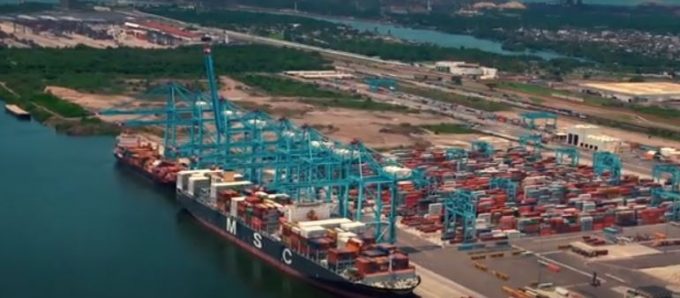Zemba gets things moving, as Hapag-Lloyd signs up for 'greener' shipping
Proving to be more than just idle talk, the Zero-Emission Maritime Buyers’ Alliance (Zemba) has ...

On Friday, Hapag-Lloyd issued a customer advisory warning of delays at the port of Lazaro Cardenas – cargo moving to and from the port hit by congestion at the Hapag-Lloyd and APM terminals.
The news was hardly a bolt out of the blue. Mexico’s largest Pacific port has suffered from congestion for more than three months, partly the result of a surge in car shipments, but problems with the rail system have also affected box traffic.
Volumes started to build after trucker protests in early August at the access points to the Ferrovalle intermodal terminal in Mexico City, a vital bottleneck for cargo between the capital and major ports. Truckers – most owner-operators – staged protests over pay, but they also vented their frustration with constraints in serving the Ferrovalle facility.
Their actions resulted in a pile-up of containers at Lazaro Cardenas, and by late August, more than 5,000 were stranded at the port. In response, CMA CGM announced a fee of $150 for shipments through the Ferrovalle terminal.
The Lazaro Cardenas National Port System Administration (Asipona) has worked with the customs authority, terminal operators and cargo stakeholders on operational changes to unclog cargo flows, notably speeding up access control and truck processing in an area close to the port designated for logistics activities and automotive traffic.
Observers blame landside problems primarily for the trails of Lazaro Cardenas and other Mexican ocean gateways. The port has not exactly been flooded with traffic on the water: in the first eight months of this year, Lazaro Cardenas handled 1,175,948 teu, 15.9% less than last year.
Mexico’s other chief container gateways, Manzanillo and Veracruz, clocked up declines in teu volume of 2.6% and 4.4%, respectively.
In addition to the operational changes, Asipona is making more land available for cargo processing. Two areas at the port are already poised for development. One was awarded in the summer to automotive processor Amports, the other to logistics firm Glovis. And Asipona recently announced plans to offer another 45 ha for logistics activities, an area already developed and could come onstream relatively quickly.
Last month saw the start of construction of the second phase of APMT’s Special Container Terminal 2 at Lazaro Cardenas. The first phase, operational in 2017, was the first semi-automated box terminal in Mexico. Phase two, expected to be completed by Q1 26, is a $140m project to upgrade the operating system and expand the yard, boosting the facility’s overall footprint to 65 ha.
Logistics providers are worried that the growth of Mexico’s logistics capabilities will lag behind the growth in demand, pointing to an influx of businesses and foreign investment largely driven by near-shoring.
Alejandro Gonzalez, director general Mexico of Hong Kong-based Kerry Logistics, told Mexico Business News that near-shoring had drawn a lot of Chinese companies, as well as from Canada and Central America. This influx has been led by the auto industry, but firms in the telecoms, electronics and perishables sectors were also setting up shop in Mexico.
Mr Gonzalez warned that the logistics sector may find itself overwhelmed by rampant growth in demand, and needed more capacity to cope. In addition to capacity constraints, he diagnosed a lack of operators, as well as of equipment, and called for collaboration between government, civil society and business owners.
Comment on this article